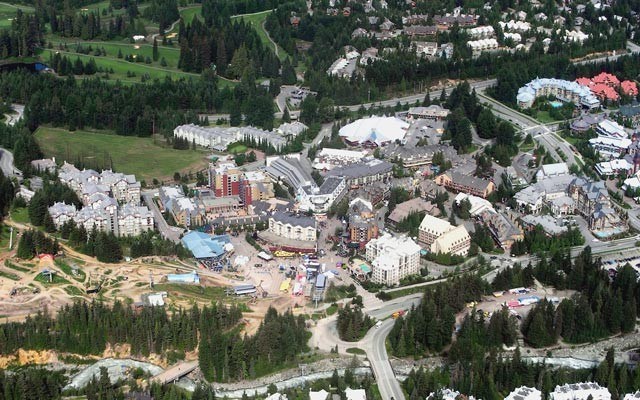By 2018, the last year of the next council's term in office, the Rainbow building and other wood-frame edifices from the first phase of Whistler Village's development will be nearly 40 years old. That some of these buildings need a little time and money reinvested is beyond dispute.
How to bring that about is a more complex question, but it's one the next council should deal with.
On the surface the issue is pretty straightforward: facilitate reinvestment in the village. However, look at what's holding up reinvestment and the problem becomes more layered, involving some understanding of Whistler's history, the importance of the village experience, balancing the needs of property owners/investors and commercial tenants, fairness to all properties and probably a little bit of tax law.
But Whistler is not the first mountain-resort community to face this issue.
A decade ago, not long after Vail celebrated its 40th anniversary, that resort community launched a $2 billion multi-year redevelopment intended to bring Vail Village up to par with Vail's skiing. The Lionshead area, spawned during the concrete brutalism of the early '70s that defaced so many French ski resorts, received the biggest makeover, but there was also significant investment in the original Vail Village itself. Since then the village has experienced a renaissance, although the economic downturn in 2008 put some projects on hold.
Whistler, which looked to Vail as an example when building its original village, has operated on a different timeline. A decade ago, the 2010 Olympics were the catalyst for Whistler. The Games fuelled the development of Whistler Olympic/Celebration/Medals Plaza in Village North and that area has, for many, become the new focal point of the village.
What the Olympics didn't do was spark a great deal of renewal in the original village. To be sure there have been some significant redevelopment efforts over the years including the Crystal Lodge, the Sundial and, currently, the Carleton Lodge, which is scheduled to re-open in December.
The municipality is also trying to do its part through its Whistler Village 3.0 initiative, which includes efforts to better define neighbourhoods within the village, improve way-finding and following up on the Retail Strategy.
As well, many owners of individual units in various buildings have spent money renovating and maintaining their properties. But this, ironically, is also the root of the problem Whistler faces: strata-titled accommodation.
Selling strata-titled hotel units, or condominiums, is a great way to get a hotel or lodge built. In the 1990s, buildings in Village North were sold, and therefore financed, before developers had even put a shovel in the ground, such was the demand for units in Whistler.
However, trying to get multiple owners to re-invest in their building several years down the road is more challenging. Particularly if the unit owners aren't getting the rental revenue they expected, which has been the case for some in Whistler.
There are, of course, many factors that affect rental rates. But in Whistler one of the key ones is that there is so much accommodation available. As the 2013 Economic Partnership Initiative report stated: "The existing number of rooms in Whistler is both a challenge and a key opportunity."
The "significant opportunity," as stated in the EPI report, is "...to better utilize our existing accommodation resources." Exactly how that is done is likely to be one of the problems the next council grapples with.
Under Focus Area 1 of the EPI report, Strategy 1.1.3 is to: "Develop a Resort Rejuvenation Initiative that considers — among other options — tax exemptions as a potential tool to attract reinvestment, refresh aging infrastructure and encourage reinvestment in existing buildings and infrastructure."
No doubt municipal staff will provide some professional, detailed analysis of how effective tax exemptions — among other options — would be and how they would work before councillors voted on the matter. Among the other options for considerations might be a re-examination of the Phase II covenant that was brought in to ensure "warm beds" in the village; providing additional development rights (perhaps resident- or employee-restricted) as an incentive for reinvestment; the municipality's role in facilitating one owner buying up all the units in a building, as was done (without municipal help) in the successful redevelopment of the Sundial Hotel. The municipality, through the Whistler Housing Authority, might also consider buying up an entire building itself and taking it out of the commercial accommodation pool.
These are all wild-ass guesses at possible scenarios and obviously no decision would be made without substantial input from the public, lawyers, municipal staff and various interested parties.
But reinvestment in the soon-to-be 40-year-old Whistler Village is the type of complex problem council is going to have to deal with in the next four years.
Electing people who have the sound judgment to deal with questions of this complexity is the duty of voters.
Bob Barnett, Pique's founding publisher and editor, is re-joining the editorial pages to cover election issues.




